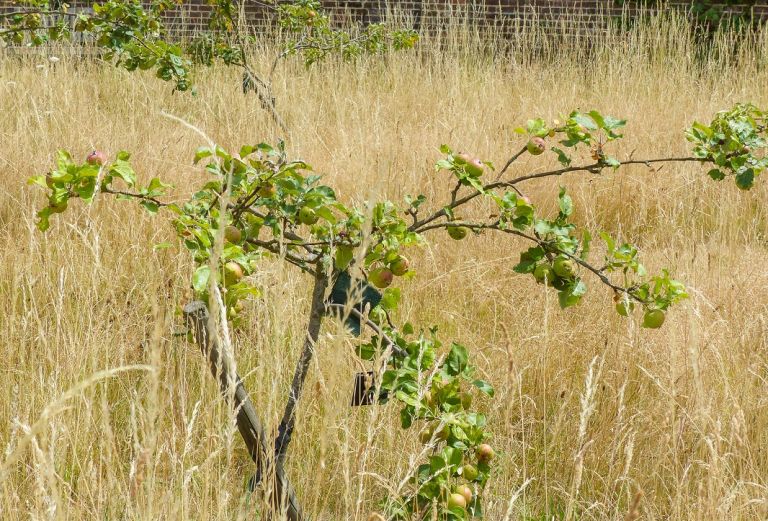
Written by garden volunteer Elaine Woo.
The summer of last year is now long behind us and the vibrant blue skies of autumn have faded as we begin to welcome the crisp grey skies of a new year. As the temperature continues to drop, we look back to a record-breaking summer seared in our collective memory.
During the summer heatwave, the garden at Fulham Palace endured temperatures as high as 43.8°C which exceeded the maximum temperature of 40.3°C recorded by the Met Office in England.
In mere days, we saw how the parks and gardens around the Palace turned into seas of beige and yellow. Although some were eager to cool off, perhaps with ice-cream, an electric fan, or even an air conditioner, the high temperatures remained.
As announced by the Met Office, last July was the driest month for England since 1935, and for East Aglia, South East and South England, it was the driest month on record. (Data from 1853 onwards is held at the Met Office database). All that was barely four months after Fulham Palace, in joining the Chelsea Physics Garden, has declared a microclimate emergency.
One of the accompanying measures the Fulham Palace garden team adopted was to install its own weather station. With the help of a Stevenson screen, a specially designed shelter, information including air temperatures (both maximum and minimum) and relative humidity can be accurately obtained daily. In addition, the gardeners have also been taking daily records of the amount of rainfall, vinery temperatures (both maximum and minimum), current soil and compost heap temperatures.
All this primary data on a local level will provide invaluable resources to assist Fulham Palace Trust in the formation of an action plan for long term habitat management. Since climate change is a gradual process, long-lived trees would likely be facing a very different climate when they grow up.
The garden also has another tool at its disposal to assist in managing its microclimate emergency. The old trees themselves could provide a wealth of information in the study of droughts. We have probably been taught at school that one can count the age of a tree by the number of rings appearing on a cross-section of a tree trunk. It is note-worthy that the pattern of the wide and narrow rings can give us information on the annual rainfall and temperatures, which can be cross-referenced with the current data.
Indeed, the availability of local information is even more needed than before, as different regions across the U.K. seem to be hit differently by the climate change. For example, in this previous July, England had received only 35% of its average rainfall for July, while Scotland did better with 81%.
Of course, nobody can predict with certainty whether this coming summer will bring another heatwave or drought, or how much ice and snow could be coming our way, but with increased scientific measurement and study on what is happening in the garden at Fulham Palace, it will be in a stronger position to take action to minimize loss of habitat in our area under the microclimate emergency.
Perhaps in the meantime, we as individuals could also strive to find ways to reduce our own carbon footprint when we do our gardening. As the garden has emphasized, local efforts all making small steps could make a positive difference!
Interested in learning more about how Fulham Palace is caring for the environment?